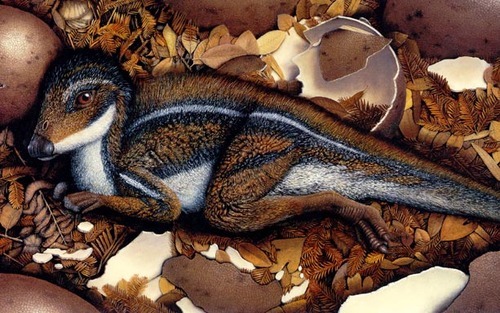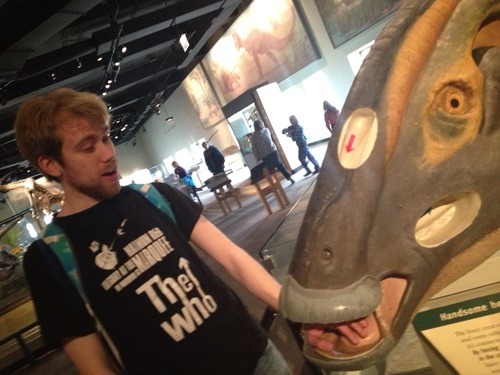Parasaurolophus walkeri, P. tubicen, P. cyrtocristatus

Source: http://fineartamerica.com/featured/a-parasaurolophus-searches-for-a-source-mohamad-haghani.html
Name: Parasaurolophus walkeri, P. tubicen, P. cyrtocristatus
Name Meaning: Near Crested Lizard
First Described: 1922
Described By: Parks
Classification: Dinosauria, Ornithischia, Genasauria, Neornithischia, Cerapoda, Ornithopoda, Iguanodontia, Dryomorpha, Ankylopollexia, Styracosterna, Hadrosauriformes, Hadrosauroidea, Hadrosauridae, Euhadrosauria, Lambeosaurinae, Parasaurolophini
My Sixth Favorite Dinosaur
There is no real need to explain why Parasaurolophus is cool. It’s one of those dinosaurs that we actually know how it sounded. It had a badass crest and complex social groups. Holy crap. It lived about 76.5 to 73 million years ago, in the Campanian stage of the Late Cretaceous. It lived in many different places - Dinosaur Park Formation in Alberta, Canada; the Kirtland Formation in New Mexico, USA, and the Fruitland Formation in Utah, USA. This is a completely iconic hadrosaur species and it was about 9.5 meters long in the largest individuals. The crest was probably used to distinguish between members of different species and of different sexes, for audible communication, and even thermoregulation. Despite its fame, it’s actually a relatively rare hadrosaur, known from a few specimens. It was a facultative quadruped, and it had high neural spines that increased the height of its back. Skin impressions are known for P. walkeri, showing uniform scales but no other structures. Its crest is connected to its nose, and may or may not have had a skin flap connecting it to the neck, though this is not confirmed. The hollowness of the crest is notable in that it would have permitted sound to pass through it.

Source: http://www.larryfelder.com/
The type species is known from only one fossil, but the other two species have at least three specimens to their names, with P. tubicen being the largest, and having the most complex air passages in its crest. P. cyrtocristatus was the smallest, with a short rounded crest. P. walkeri had the characteristic long, unrounded crest, and longer upper arms. Charonosaurus has begun to be considered instead of a very closely related genus, another species of Parasaurolophus, P. jiayensis, which would make it the first non-North American species. Parasaurolophus was present in many different habitats. In Alberta, it lived along side Centrosaurus, Chasmosaurus, Gryposaurus, Corythosaurus, Gorgosaurus, Edmontonia, Euoplocephalus, and Dyoplosaurus, and was a rare part of the fauna.

Source: http://www.framestore.com/work/itv-prehistoric-park
In New Mexico, P. crytocristatus lived with Utahceratops, Kosmoceratops, Pentaceratops, Ornithomimus, and teratophoneus. The larger species P. tubicen lived with Alamosaurus, Krotsaurus, Pentaceratops, Nodocephalosaurus, Sauronitholestes, and Bistahieversor. The Kirtland Formation in particular would have been a large floodplain with many conifers. In Utah, it lived in a plateau area near the Western Interior Seaway, a large floodplain with channels and peat swamps, ponds, lakes, and highlands. it was a wet and humid climate and a very diverse environment. Parasaurolophus lived alongside dromaeosaurids, talos, Ornithomimus, Albertosaurus, Teratophoneus, ankylosaurids, Gryposaurus, Utahceratops, Nasutoceratops, Kosmoceratops, and Hagryphus.

Source: Me. This is Max (my boyfriend) playing with the Parasaurolophus model in the Field Museum. One of my favorite photos.
Parasaurolophus would have eaten plants while chewing, with constantly replaced teeth that were packed together into batteries with hundreds of teeth. It could crop plant life with its beak, and had a narrow beak for selective feeding. It crest was definitely for multiple purposes, and it’s not sure which purpose was the most important in its evolution. Its crest changed with age and was sexually dimorphic, however the major divergences in crest shape and length have been determined as differences in species. A small tubular crest was present in juveniles, with most of the supporting bones also smaller indicating that it had not yet reached maturity. However, Parasaurolophus crests started developing at a younger crest than its relatives such as Corythosaurus, showing how its crest could get so big in its lifespan.

Source: Me again; Field Museum fossil of P. crytocristatus
The crest was definitively not used for an aquatic lifestyle or any sort of amphibious lifestyle, and it was not used for moving or supporting the head. It also wasn’t a foliage deflector, a weapon, for housing specialized organs or salt glands, or expanded areas of olfactory tissue, or throwing jets of chemical fire at enemies. Yes. These were all hypotheses proposed over trumpet. I’m as baffled as you are. It was for auditory and visual communication and, given its size, gave a clear visual signal. Given that the animal had large eye sockets and sclerotic rings that means it would have had acute vision and diurnal habits, sight was very important for Parasaurolophus. Based on scans of their inner ears, it was found that they had a very well developed inner ear, and could hear high frequencies, allowing them to hear the chirps of their young as well as the calls made by other members of the species with their crests. Finally, the intense vascularization of the crest would have allowed the brain to be kept cool.

Source: http://forums.superherohype.com/showthread.php?t=332214&page=2
I had to.
Sources:
http://www.prehistoric-wildlife.com/species/p/parasaurolophus.html
https://en.wikipedia.org/wiki/Parasaurolophus
Shout out goes to riddikulus-darren!













